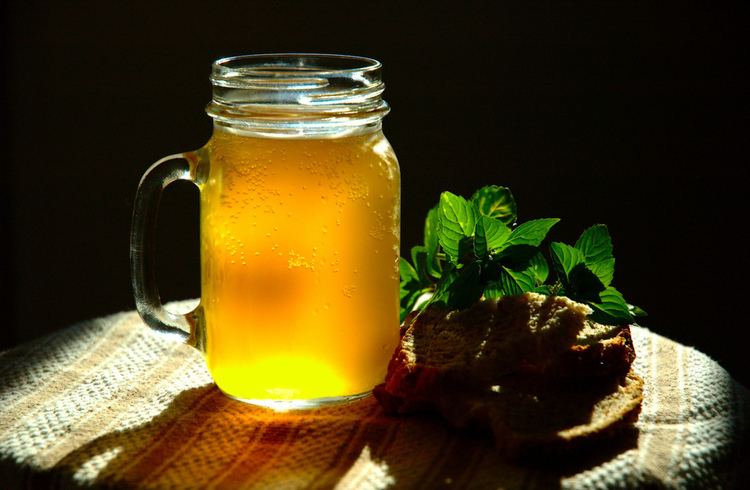 | ||
Similar Okroshka, Kombucha, Kompot, Kefir, Kissel | ||
Kvass is a traditional Slavic and Baltic fermented beverage commonly made from rye bread, known in many Eastern European countries and especially in Russia as black bread. The colour of the bread used contributes to the colour of the resulting drink. It is classified as a non-alcoholic drink by Russian standards, as the alcohol content from fermentation is typically low (0.5–1.0%). It may be flavoured with fruits such as strawberries and raisins, or with herbs such as mint.
Contents
- Kvass how to make kvass russian bread drink p k
- Terminology
- History
- Manufacturing
- Russia
- Poland
- Latvia
- Lithuania and elsewhere
- Nutrition
- Similar beverages
- References
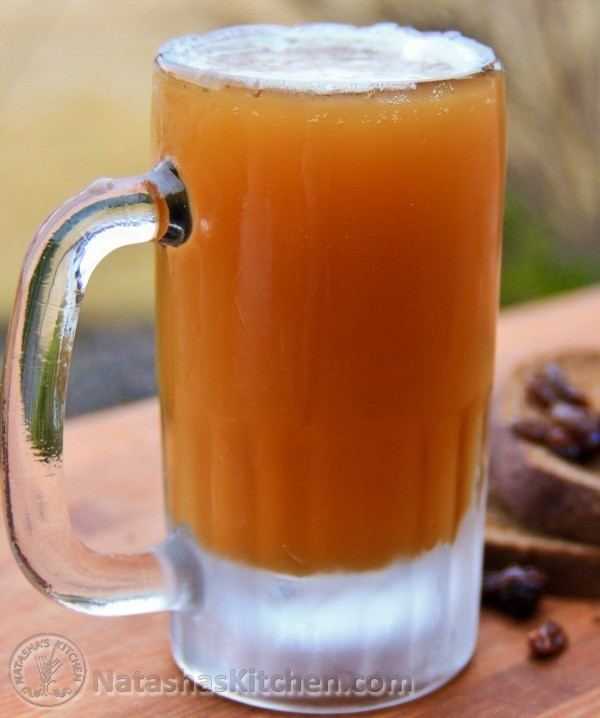
It is especially popular in Russia, Latvia, Lithuania, Belarus and Ukraine, but also well-known throughout Estonia and Poland, as well as in other states such as Georgia, Azerbaijan, Kazakhstan and Armenia. Many kvass vendors there sell the drink in the streets. Kvass is also popular in Harbin and Xinjiang, China, where Russian culture has had an influence.

Kvass how to make kvass russian bread drink p k
Terminology

The word "kvass" is derived from Old Church Slavonic квасъ from Proto-Slavic *kvasъ ("leaven", "fermented drink") and ultimately from Proto-Indo-European base kwat. Today the words used are almost the same: in Belarusian: квас, kvas; Chinese: 格瓦斯/克瓦斯, géwǎsī/kèwǎsī; Latvian: kvass; Polish kwas chlebowy (bread kvass); Russian: квас, kvas; in Ukrainian: квас/хлібний квас/сирівець, kvas/khlibny kvas/syrivets. Except Lithuanian: gira, which means beverage similar to Latvian dzira. In Estonian: kali.
History
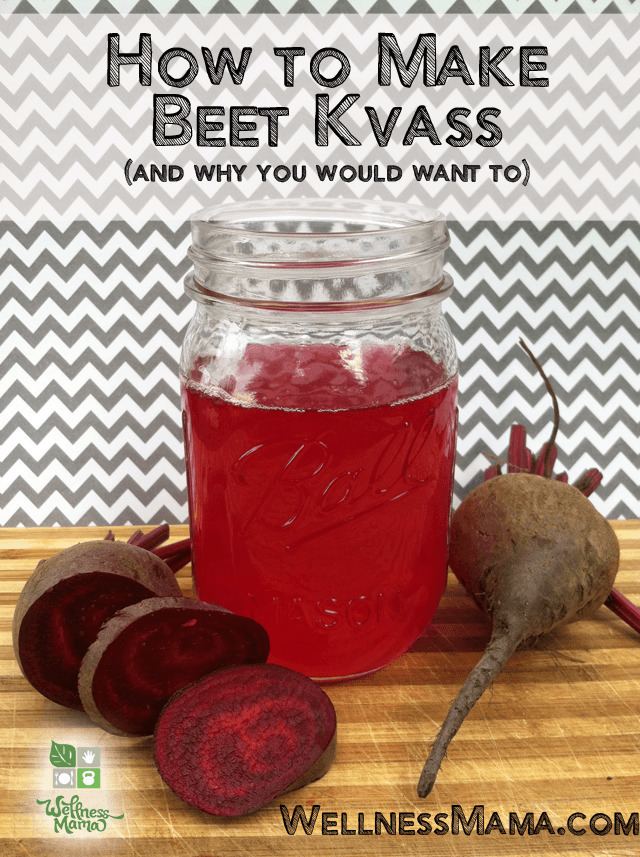
Kvass has been a common drink in Eastern Europe since at least the Middle Ages, comparable with other ancient fermented grain beverages including beer brewed from barley by the ancient Egyptians, the pombe or millet beer of Africa, the so-called rice wines of Asia, the chicha made with corn or cassava by the natives of America. Kvass was invented by the Slavs and became the most popular among East Slavs.
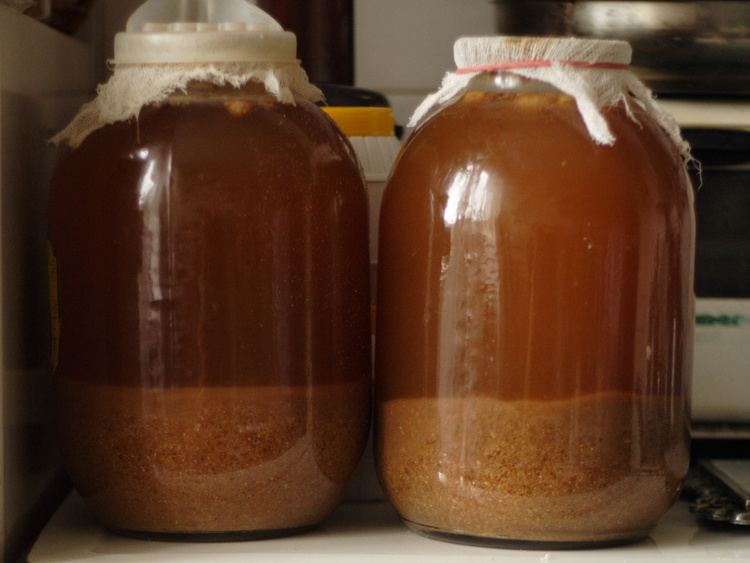
The word "kvass" was first mentioned in the Primary Chronicle, in the description of events of the year 996, following the Christianization of the Kievan Rus'. According to the Merriam-Webster Dictionary and Oxford English Dictionary the first mention of kvass in an English text took place sometime around 1553. In Russia, under Peter the Great, it was the most common non-alcoholic drink in every class of society. William Tooke, describing Russian drinking habits in 1799, stated that "The most common domestic drink is quas, a liquor prepared from pollard, meal, and bread, or from meal and malt, by an acid fermentation. It is cooling and well-tasted."
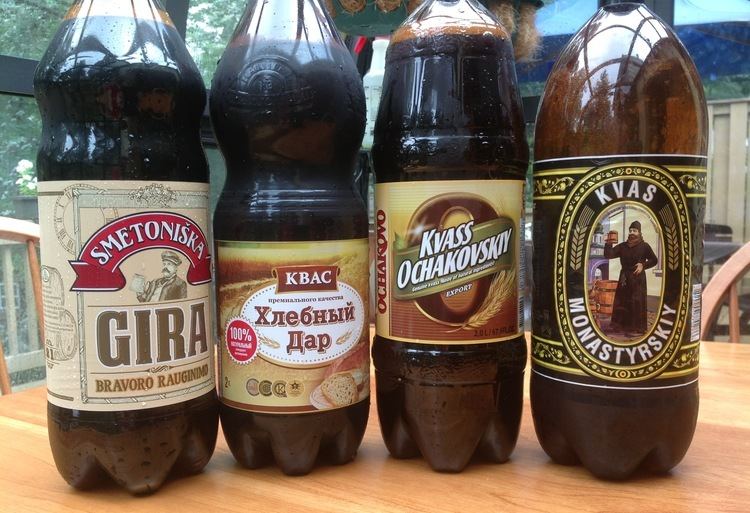
Apart from drinking kvass, Slavic families (especially the poor ones) used it as the basis of many dishes they consumed. Traditional cold summertime soups of Russian cuisine, such as okroshka, botvinya and tyurya, are based on kvas. The same tradition is found in Romanian cuisine, where the fermented liquid used for cooking is called borș.
Kvass was reported to be consumed in excess by peasants, low-class citizens, and monks; in fact, it is sometimes said that it was usual for them to drink more kvass than water. In the 19th century, the kvass industry was created and less natural versions of the drink became increasingly widespread. On the other hand, the popularity of kvass and the market competition lead to the emergence of many varieties, which included herbs, fruits and berries. At that time kvass vendors called kvasnik (pl. kvasniki) were on the streets in almost every city. They often specialized in particular kinds of kvass: strawberry kvass, apple kvass, etc.
While kvass used to be consumed widely in most Slavic countries, its popularity spread to Latvia and Lithuania. Today it forms the basis of a multimillion-dollar industry, though it has been struggling ever since the introduction of Western soft drinks in Eastern European countries. Kvass was once sold during the summer only, but is now produced, packaged, and sold year-round.
Manufacturing
Kvass is made by the natural fermentation of bread, such as wheat, rye, or barley, and sometimes flavoured using fruit, berries, raisins, or birch sap collected in the early spring. Modern homemade kvass most often uses black or regular rye bread, usually dried (called plural suhari), baked into croutons, or fried, with the addition of sugar or fruit (e.g. apples or raisins), and with a yeast culture and zakvaska ("kvass fermentation starter").
Commercial kvass, especially less expensive varieties, is occasionally made like many other soft drinks, using sugar, carbonated water, malt extract, and flavourings. Better brands, often made by beer rather than soft drink manufacturers, usually use a variation of the traditional process to brew their products. Kvass is commonly served unfiltered, with the yeast still in it, which adds to its unique flavour as well as its high vitamin B content.
Russia
Although the introduction of western soft drinks such as Coca-Cola and Pepsi had reduced the commercial sale of kvass in Russia, kvass has been more recently marketed as a "patriotic" alternative to cola, sparking a "kvass revival". For example, the Russian company Nikola (by coincidence its name sounds like "not cola" in Russian) has promoted its brand of kvass with an advertising campaign emphasizing "anti cola-nisation." Moscow-based Business Analytica reported in 2008 that bottled kvass sales had tripled since 2005 and estimated that per-capita consumption of kvass in Russia would reach three liters in 2008. Between 2005 and 2007, cola's share of the Moscow soft drink market fell from 37% to 32%. Meanwhile, kvass' share more than doubled over the same time period, reaching 16% in 2007. In response, Coca-Cola launched its own brand of kvass in May 2008. This is the first time a foreign company has made an appreciable entrance into the Russian kvass market. Pepsi has also signed an agreement with a Russian kvass manufacturer to act as a distribution agent. The development of new technologies for storage and distribution, and heavy advertising, have contributed to this surge in popularity; three new major brands have been introduced since 2004. The town of Zvenigorod, west of Moscow, is known for its authentic kvass, which is brewed in the basement of the town's Orthodox monastery.
Poland
Much like in other Eastern European countries, kvass has historical roots in Poland – mainly due to the trade between the Kingdom of Poland and Kievan Rus'. Kvass may have appeared in Poland as early as the 10th century. The production of kvass went on for several hundred years, as recipes were passed down from parent to offspring. This continued in the Polish-Lithuanian Commonwealth. It was at first commonly drunk among peasants who worked on the fields and eventually spread to the szlachta (Polish nobility). One example of this is kwas chlebowy sapieżyński kodeński, an old type of Polish kvass that is still sold as a contemporary brand. Its origins can be traced back to the 1500s, when Jan Sapieha – a magnate of the House of Sapieha – was granted land by the Polish king. On those lands he founded the town of Kodeń. He then bought the mills and 24 villages of the surrounding areas from their previous landowners. It was then that the taste of kvass became known among the Polish szlachta, who used it for its supposed healing qualities. After the last Partition of the Polish-Lithuanian Commonwealth in 1795, Poland ceased to be an independent state. Throughout the 19th century, kvass remained popular among Poles who lived in the Russian Empire, especially the inhabitants of rural areas.
Production of the beverage in Poland on an industrial scale can be traced back to the more recent interwar period, when the Polish state regained independence as the Second Polish Republic. In interwar Poland, kvass was brewed and sold in mass numbers by magnates of the Polish drinks market like the Varsovian brewery Haberbusch i Schiele or the Karpiński company. Kvass was exceptionally popular in Eastern Poland, partly due to the plentiful numbers of Belarusian and Ukrainian minorities that lived there. However, with the collapse of many prewar businesses and much of the Polish industry during World War II, kvass lost popularity following the aftermath of the war. It was reintroduced industrially after the formation of the People's Republic of Poland as a satellite state of the USSR, though much like in other Slavic and Baltic countries it lost favour upon the introduction of Coca-Cola onto the Eastern European market and once again during the economic crisis of the 1980s in Poland. The collapse of the Eastern Bloc between 1989–1991 was followed by the arrival of other Western soft-drinks in former Soviet countries. Ever since then, the popularity of kvass in Poland has never recovered to its previous heights.
Although not as popular in Poland nowadays as it is in Russia or Ukraine, kvass can still be found in many supermarkets and grocery shops throughout the nation where it is known in Polish as kwas chlebowy ([kvas xlɛbɔvɨ]). Commercial bottled versions of the drink are the most common variant, as there are companies that specialize in manufacturing a more modern version of the drink (some variants are manufactured in Poland whilst others are imported from its neighbouring countries, Lithuania being the most popular source). However, recipes for a traditional version of kvass exist; some of them originate from Eastern Poland. Although commercial kvass is much easier to find in Polish shops, Polish manufacturers of more natural and healthier variants of kvass have become increasingly popular both within and outside of the country's borders – one good example being a company that has made itself known not only on the Polish market, but also in Slovakia. Street vendors selling fresh kvass also appear from time to time, especially during summer in cities like Zakopane, where tourists sometimes crowd the streets seeking refreshment on a hot day.
Latvia
After the fall of the Soviet Union in 1991, the street vendors disappeared from the streets of Latvia due to new health laws that banned its sale on the street. Economic disruptions forced many kvass factories to close. The Coca-Cola Company moved in and quickly dominated the market for soft drinks. In 1998 the local soft drink industry adapted by selling bottled kvass and launching aggressive marketing campaigns. This surge in sales was stimulated by the fact that kvass sold for about half the price of Coca-Cola. In just three years, kvass constituted as much as 30% of the soft drink market in Latvia, while the market share of Coca-Cola fell from 65% to 44%. The Coca-Cola company had losses in Latvia of about $1 million in 1999 and 2000. The situation was similar in the other Baltic countries and Russia. Coca-Cola responded by buying kvass manufacturers as well as making kvass at their own soft drink plants.
Lithuania and elsewhere
In Lithuania kvass is known as "gira" and is widely available in bottles and draft. Many restaurants in Vilnius make their own gira, which they sell on the premises. Strictly speaking, gira can be made from anything fermentable — such as caraway tea, beetroot juice, or berries — but it is made mainly from black bread or barley/rye malt.
The only breweries in the United States that brew kvass all year round are the Beaver Brewing Company in Beaver Falls, Pennsylvania, where it is made with the addition of raisins and lemons, and Kolokol kvass in Helena, Montana, using traditional ingredients (water, sugar, rye bread, yeast). Iggy's Foods, LLC, a company based in Bainbridge Island, Washington, produces a live, cultured raw-food Ginger Beet kvass made with beets, Hawaiian ginger, limes, and Himalayan sea salt. The Brinery, a wholesale fermenter in Ann Arbor, Michigan, sells Heart Beet kvass (Turnips, water, beets, garlic, sea salt) year round and seasonal kvass, which varies.
In the United Kingdom, kvass is practically unknown, as there are no cultural ties to it within the nation's history and there are no renowned kvass breweries in the country. However, with the influx of immigrants following the 2004 enlargement of the European Union, a number of stores selling cuisine and beverages from Eastern Europe cropped up throughout the UK, many of them storing kvass on their shelves.
Nutrition
As its primary ingredient is rye, kvass is a good source of vitamin B-1 and B-6, magnesium, phosphorus, amino acids, and pantothenate. It is also rich in lactic acid and simple sugars, which contributes to its pleasant, thirst-quenching taste, provides ample calories to fuel physical activity, and may improve digestion, as with other lacto-fermented foods such as yogurt and sauerkraut.
Similar beverages
Other beverages from around the world that are traditionally low-alcohol and lacto-fermented include:
